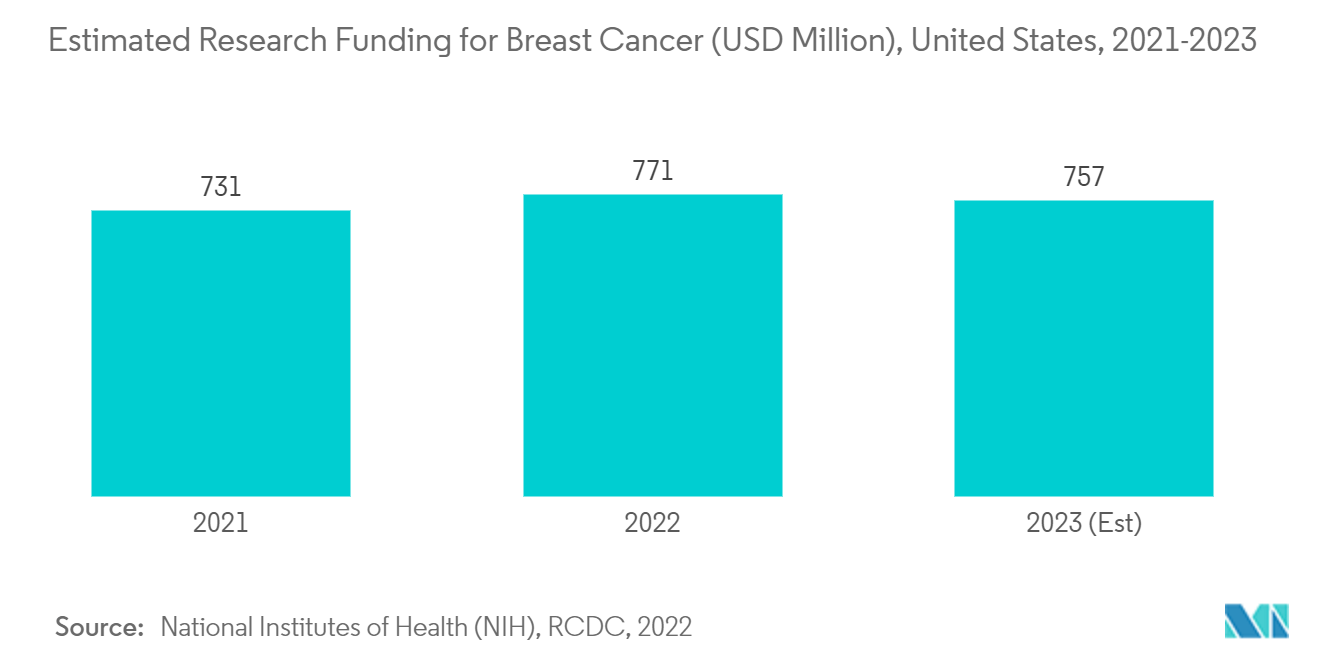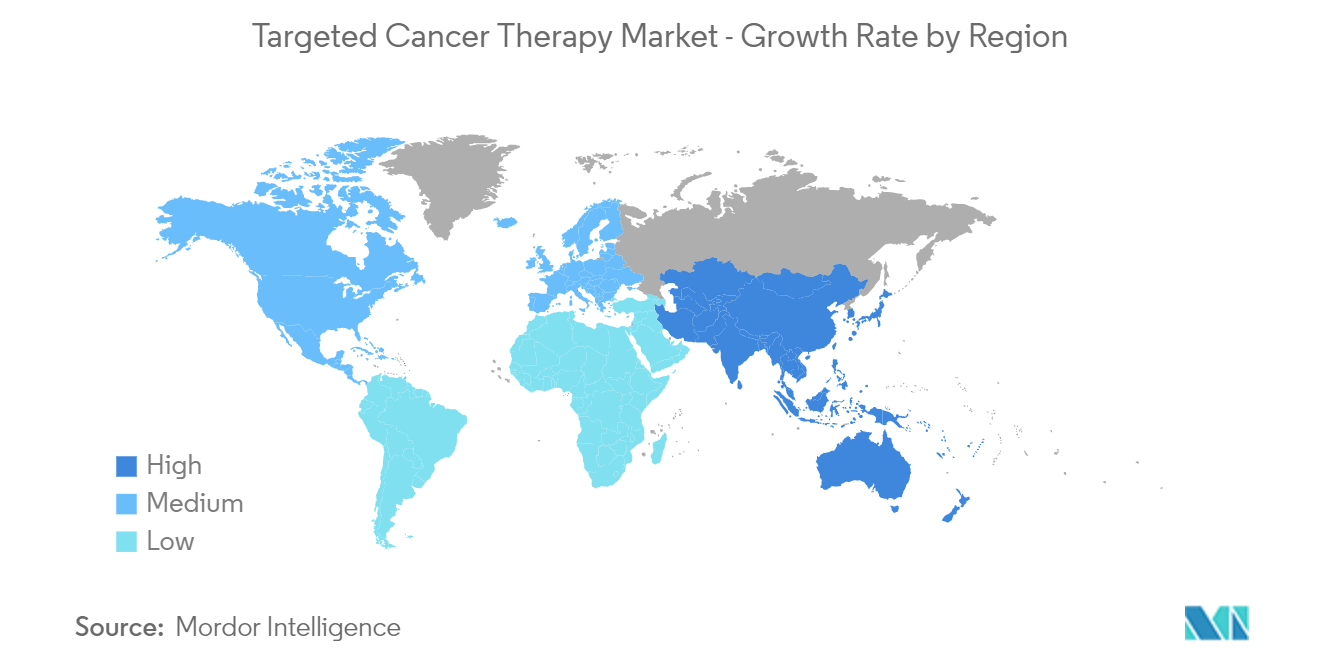Market Trends of Global Targeted Cancer Therapy Industry
This section covers the major market trends shaping the Targeted Cancer Therapy Market according to our research experts:
Breast Cancer Segment is Expected to Register a High CAGR in the Market Over the Forecast Period
Breast cancer is the second most common cancer in women after skin cancer in the United States. The major factors fueling the market's growth are the increasing prevalence of breast cancer, increasing investment by companies and government in research and development, and advancements in cancer biology and pharmacology promoting drug development. As per facts and statistics 2022 of Breastcancer.org, in 2022, an estimated 287,850 new cases of invasive breast cancer are expected to be diagnosed in women in the United States. This shows the high number of cancer cases that raise the demand for advanced targeted therapies and is expected to boost the market over the forecast period.
Furthermore, the new research studies of targeted therapies on breast cancer likely drive the market to grow. For instance, as per the study report published by PNAS in September 2022, an antibody-based therapy developed by the researchers has completely removed circulating tumor cells (CTCs) in breast cancer mice models. In mice isogenic and xenograft models of triple-negative breast cancers, the cadherin protein-targeting antibody (23C6) successfully prevents blood-borne metastases. Hence, the new targeted therapy studies on breast cancer likely increase widespread applications, which are expected to boost the market through this segment.
The companies are focusing on developing targeted therapy for breast cancer and increasing their focus on adopting different strategies to withhold their position in the market. For instance, in May 2021, Zydus Cadila launched Trastuzumab Emtansine, an antibody-drug conjugate biosimilar, Ujvira, to treat early and advanced HER2-positive breast cancer. Therefore, the high burden of breast cancer, along with new approvals and launches in targeted therapies, are increasing the demand for breast cancer treatment, thereby contributing to market growth.

North America is Expected to Have the Significant Market Share Over the Forecast Period
North America is expected to have the largest share of the market due to the presence of a robust regulatory environment that supports the development of targeted therapies, the existence of key industry players, and the existence of prestigious universities that support research activities in the region. The major factors fueling the market's growth are the increasing prevalence of various types of cancer in the region, increased adoption of targeted cancer therapy, rising awareness about cancers, and rising product launches.
The high burden of cancers in the region is one of the major driving factors for the market's growth. For instance, as per the Cancer Facts & Figures 2023 by the American Cancer Society, the number of new cancer cases in the United States is estimated to be 1.95 million in 2023, out of which 1.01 million are male, and 0.94 million are female. Similarly, as per the new cancer estimates for 2022 by Statistics Canada, an estimated 233,900 people in Canada will be diagnosed with cancer in 2022. This shows the high burden of cancers in the region that increases the need for advanced targeted therapies, which drives the market to grow in this region.
Furthermore, the new product approvals and launches in the region are expected to boost the market's growth. For instance, in May 2021, the United States FDA approved Janssen's Rybrevant (amivantamab) as a targeted therapy for treating adult patients with non-small cell lung cancer whose tumors have epidermal growth factor receptor (EGFR) exon 20 insertion mutations. Thus, growing cancer cases and increasing product approvals related to targeted therapies in the region are expected to boost the market's growth in the coming years.


